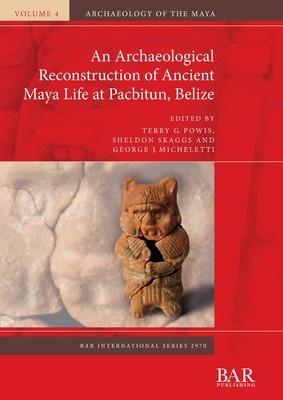
- We will send in 10–14 business days.
- Publisher: British Archaeological Reports (Oxford) Ltd
- Year: 2020
- Pages: 274
- ISBN-10: 1407356631
- ISBN-13: 9781407356631
- Format: 21 x 29.7 x 1.9 cm, minkšti viršeliai
- Language: English
- SAVE -10% with code: EXTRA
An Archaeological Reconstruction of Ancient Maya Life at Pacbitun, Belize (e-book) (used book) | bookbook.eu
Reviews
Description
This volume presents the results of 35 years of archaeological research at the Maya site of Pacbitun, located in west central Belize. The site was continuously occupied from 900 BC to AD 800/900. Excavations focused on both the site core and periphery, with investigations centred around housemounds, workshops, causeways, caves, and other karst features. In the site core, we excavated at areas ranging from small domestic houses dating to the Middle Preclassic to large ceremonial architecture (e.g. courtyards, palaces, temples) and complexes (e.g. E Groups) dating to the Late/Terminal Classic periods. From a material culture perspective, we conducted extensive research on ancient Maya use of plants, animals, ground stone tools, musical instruments, and ceramics. Tying all of these aspects together, our project has routinely utilised spatial technologies and 3D modelling (aerial and terrestrial LiDAR, photogrammetry) that help to capture our research efforts, from architecture to material remains, over the long-term.
EXTRA 10 % discount with code: EXTRA
The promotion ends in 23d.13:01:04
The discount code is valid when purchasing from 10 €. Discounts do not stack.
- Publisher: British Archaeological Reports (Oxford) Ltd
- Year: 2020
- Pages: 274
- ISBN-10: 1407356631
- ISBN-13: 9781407356631
- Format: 21 x 29.7 x 1.9 cm, minkšti viršeliai
- Language: English English
This volume presents the results of 35 years of archaeological research at the Maya site of Pacbitun, located in west central Belize. The site was continuously occupied from 900 BC to AD 800/900. Excavations focused on both the site core and periphery, with investigations centred around housemounds, workshops, causeways, caves, and other karst features. In the site core, we excavated at areas ranging from small domestic houses dating to the Middle Preclassic to large ceremonial architecture (e.g. courtyards, palaces, temples) and complexes (e.g. E Groups) dating to the Late/Terminal Classic periods. From a material culture perspective, we conducted extensive research on ancient Maya use of plants, animals, ground stone tools, musical instruments, and ceramics. Tying all of these aspects together, our project has routinely utilised spatial technologies and 3D modelling (aerial and terrestrial LiDAR, photogrammetry) that help to capture our research efforts, from architecture to material remains, over the long-term.


Reviews